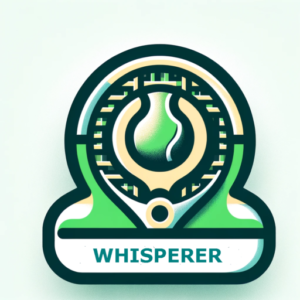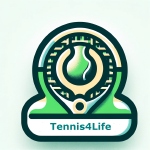Match Fit at Any Age: Lessons from a Lifetime on Court
Tennis for Life
I’ve been lucky to spend a long time on the tennis court. And over those decades, I’ve learned that success in this game comes in many forms. It’s not always about rankings or trophies. Sometimes, it’s just about still being out there—moving, competing, and finding joy in the challenge.
In my 20s, I had the good fortune as a young pro to share the court with some of the world’s top 100 players and picked up a few titles along the way. Later, in my late 30s, I moved to the U.S. and somehow ended up as the top-ranked player in the Missouri Valley—proof, perhaps, that persistence can take you places talent alone can’t.
By 50, though, I figured my best tennis was behind me. My legs had lost a step, recovery was slower, and most of my opponents looked like they were playing hooky from high school.
But then came 60—and a bit of a surprise. I started playing the U.S. Nationals and somehow ended up with a No. 1 national doubles ranking. Turns out the real secret to good doubles is to find yourself a great partner! Returning from the U.S. for family reasons, I even snagged our club singles title, becoming its oldest-ever champ. (Granted, the field that year might’ve been thinner than usual.)
Now, in my 70s, here’s the part that still amazes me: I’m not just showing up. I’m still competing.
Mind you, all of this has been under the watchful eye of my toughest coach yet—my own body.
People often ask, “What’s your secret?” Honestly, it’s no secret. It’s a mix of discipline, adaptation, and a bit of good humor. Here’s what’s kept me going—and maybe it’ll help you stay match-ready too.
1. Rethink How You Train
Your body changes, so your training should too. At this stage, it’s not about how hard you push—it’s about how smart you train.
Focus on:
-
Proper warm-ups and daily mobility work
-
Balance fundamentals: prep step, cross-over step, first-step reaction
-
Longer recovery windows between intense workouts
You’re not losing your game—you’re just evolving it.
2. Build a Durable Tennis Engine
Durability beats peak performance when you’re playing the long game.
Try this simple rhythm:
-
3 training sessions
-
2 active recovery days
-
Repeat consistently for at least 3 months
Include in your routine:
-
Regular stretching, core strengthening, and hip mobility work to enhance balance, reduce injury risk, and keep your movement fluid and efficient
-
Tennis-specific cardio and lateral movement drills to stay sharp
-
Low-impact endurance options like cycling
-
Slow, steady strength training—resistance bands are often the preferred tool for maintaining control and reducing joint strain.
3. Make Recovery a Priority
Recovery isn’t what you do after training—it is training.
Build your recovery toolkit:
-
Alternate high- and low-intensity days
-
Daily stretching, foam rolling, and mobility work
-
Prioritize high-quality sleep
The better you recover, the longer you last.
4. Master the Details
It’s the little things that start to matter most.
Tighten up by:
-
Prioritizing protein intake to help preserve muscle mass
-
Keeping alcohol to a minimum—especially after matches
-
Making warm-ups and cool-downs a non-negotiable part of every session
Staying consistent with the basics adds years to your playing life.
5. Use Your Experience
This is where wisdom becomes your edge.
Play the mental game:
-
Use controlled 4-7-8 breathing and visualization techniques to stay grounded under pressure
-
Treat your pre-point routine as a ritual—it anchors focus and rhythm
-
Incorporate tools like the tennis ball squeeze to stay calm and composed in high-stress moments
You’re not just hitting the ball anymore—you’re managing the moment.
6. My Secret Weapons: Partners, Pupils, and Plenty of Unsolicited Advice
And giving full credit to —
- Pamela, my beloved, who took up tennis at 50, keeps improving, and now regularly “coaches” me, whether I ask for it or not;
- Coach Tim, whose hitting sessions are every bit as enjoyable as they are effective;
- I’m also deeply grateful to the juniors I’ve had the chance to mentor—nothing keeps you young like their energy and enthusiasm;
- And to all the players I’ve had the privilege of training with—there’s real joy in witnessing those breakthrough moments, and I’d be lying if I said those big smiles didn’t give me a lift too.
Wrap
Playing your best tennis as you age isn’t about grinding harder. It’s about staying nimble, recovering smart, and letting experience take the lead.
With the right habits and mindset, your best years on court might still be ahead of you—though I’ll admit, some days my body and I have different opinions on that!



